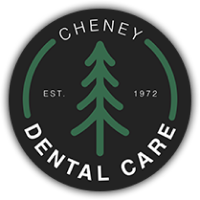Scaling And Root Planing: The Gold Standard For Gum Disease Treatment

Gum disease, also known as periodontal disease, is a widespread condition that can have severe consequences if left untreated. Scaling and root planing (SRP) is considered the gold standard for treating gum disease, providing an effective way to restore gum health.
In this blog, we will explore what scaling and root planing entail, why it is so effective, and what you can expect from the treatment process.
Gum Disease & Its Stages
Gum disease occurs when the gums become infected and inflamed due to the accumulation of plaque—a sticky film of bacteria that forms on teeth. There are two primary stages of gum disease:
- Gingivitis: The early stage is characterized by:
- Red, swollen gums.
- Bleeding while brushing or flossing.
- Persistent bad breath.
- Periodontitis: If gingivitis is not treated, it can progress to periodontitis, which can result in:
- Gum recession
- Loss of bone around the teeth
- Tooth mobility and eventual loss
Risk Factors for Gum Disease
Several factors can increase the risk of developing gum disease, including:
- Poor Oral Hygiene: Inadequate brushing and flossing can lead to plaque buildup.
- Smoking: Tobacco use can impair gum health and healing.
- Hormonal Changes: Changes during pregnancy, menstruation, or menopause can affect gum sensitivity.
- Genetics: A family history of gum disease can predispose individuals to the condition.
- Underlying Health Conditions: Diseases like diabetes and cardiovascular issues can contribute to gum disease.
Why Scaling and Root Planing Is the Gold Standard?
Scaling and root planing is regarded as the gold standard for several compelling reasons:
1. Thorough Removal of Bacteria
SRP effectively removes harmful bacteria and biofilm that contribute to gum disease. By eliminating these irritants, it reduces inflammation and infection in the gums.
2. Prevention of Tooth Loss
Early intervention with SRP can prevent the progression of gum disease, significantly reducing the risk of tooth mobility and loss. Studies indicate that timely treatment leads to better long-term outcomes.
3. Minimally Invasive Procedure
Scaling and root planing are non-surgical treatments, making them less invasive than surgical options. Patients can expect a quicker recovery time and fewer associated risks.
4. Promotes Healing
The procedure not only addresses existing gum disease but also encourages healthy gum tissue to regenerate. Patients often experience less bleeding and inflammation following SRP.
5. Customized Treatment
Scaling and root planing can be tailored to each patient’s specific needs, ensuring personalized care that effectively addresses their gum health.
What Does The Treatment Process Include?
Consultation
Before the procedure, a dental professional will conduct a comprehensive examination of your oral health, which may include:
- Visual Examination: Checking for signs of gum disease.
- X-Rays: Assessing the bone structure supporting the teeth.
The Procedure
- Anesthesia: Local anesthesia may be administered to ensure comfort during the procedure.
- Scaling: The dentist or hygienist will use ultrasonic tools and hand instruments to remove plaque and tartar from the teeth and beneath the gumline.
- Root Planing: The roots of the teeth will be smoothed to create a surface that is less prone to bacteria buildup.
Aftercare
- Recovery: Some discomfort or sensitivity is normal following the procedure but usually subsides within a few days.
- Post-Procedure Instructions: Our dentist will provide care instructions, including tips for maintaining oral hygiene at home.
Benefits of Getting This Treatment
1. Improved Oral Health
- Reduction of Bacteria: SRP significantly lowers the number of harmful bacteria in the mouth, leading to healthier gums.
2. Enhanced Aesthetic Appearance
- Gum Health: Healthier gums contribute to a more attractive smile and improve overall facial aesthetics.
3. Cost-Effectiveness
- Preventive Care: Early treatment through SRP can prevent the need for more extensive (and costly) procedures in the future.
4. Systemic Health Benefits
- Link to Overall Health: There is growing evidence that gum disease is linked to systemic health issues, such as heart disease and diabetes. Treating gum disease can help mitigate these risks.
Maintain Gum Health After Scaling and Root Planing
1. Daily Oral Hygiene
- Brushing: Brush at least twice a day with fluoride toothpaste.
- Flossing: Floss daily to remove plaque and food particles between teeth.
2. Regular Dental Visits
- Check-Ups: Schedule routine dental cleanings and check-ups every six months or as advised by our dentist.
3. Healthy Lifestyle Choices
- Avoid Tobacco: Steer clear of smoking or chewing tobacco, as it significantly impacts gum health.
- Balanced Diet: Consume a diet rich in vitamins and minerals to support gum health.
4. Monitoring Changes
- Awareness: Be vigilant for any changes in your gum health, such as increased bleeding or swelling, and consult our dentist if you notice any concerns.
Gum disease can be effectively treated using minimally invasive scaling and root planing, which targets the underlying causes of the problem. They not only address current gum disease but also encourage healing and avert future problems by completely eliminating plaque and tartar and smoothing the tooth roots.
With appropriate aftercare and routine dental exams, patients can preserve their gum health and have a lovely, healthy smile. If you think you may have gum disease or have been told to consider scaling and root planing, speak with our dentist right now to learn more about your options for attaining ideal oral health.


